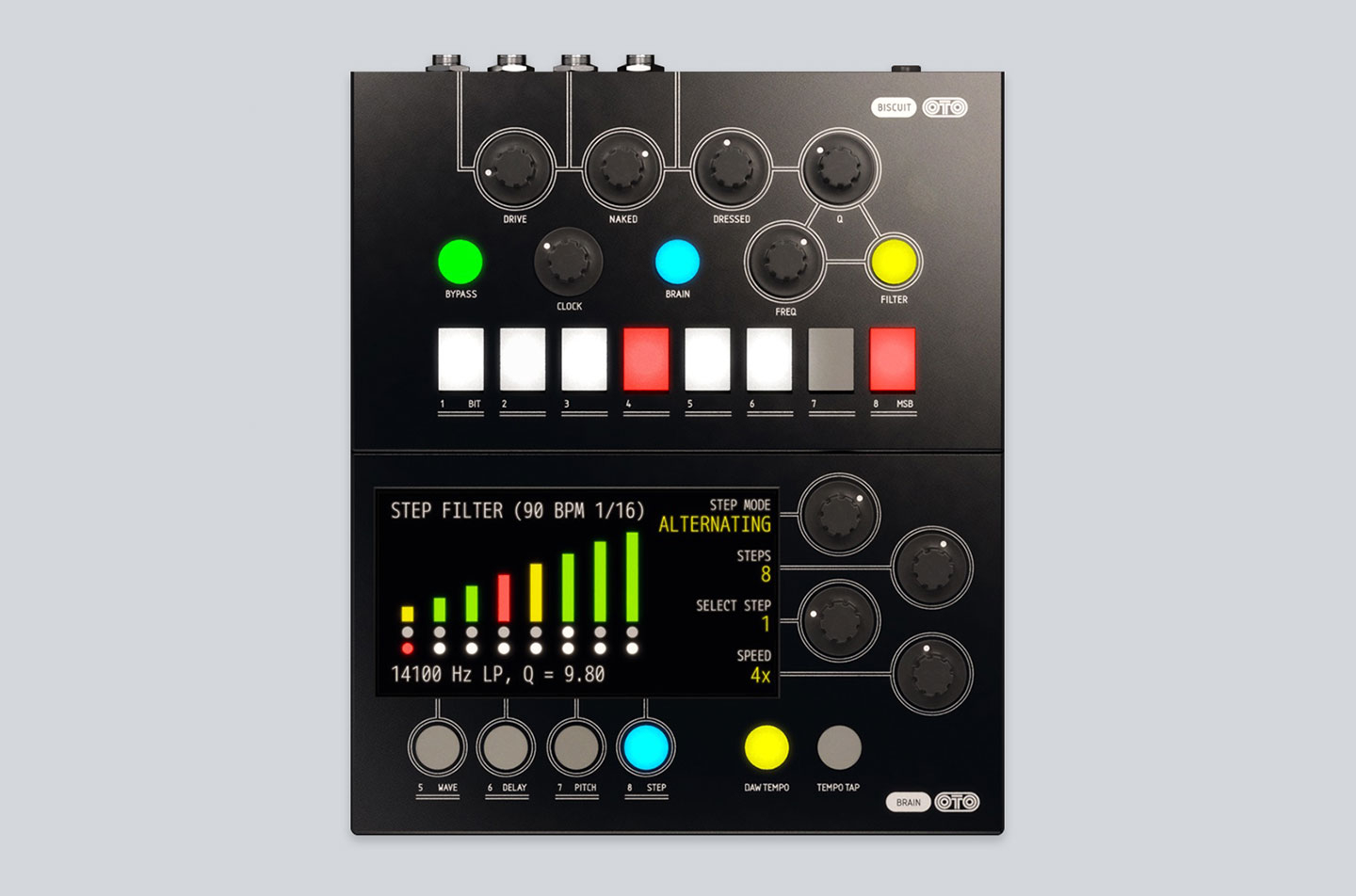- Denis Cazajeux's instant classic bitcrusher gets the software treatment.
- The idea for the OTO Biscuit was born when its creator, Denis Cazajeux, wanted to design an effects pedal that could simulate the characteristic sound of the classic Fairlight CMI synthesiser. One of the things he discovered while building his early experiments in a plastic butter dish was the creative potential of messing with the individual digital bits of this primitive sound engine. The discovery drove the eventual design of the final unit, whose most prominent feature was eight soft toggle buttons configured especially for bit-mangling. After being released in 2010, it was discontinued in 2013 due to a shortage of components, but the resulting scarcity and Biscuit's generally esoteric nature made it into something of a classic, fetching high prices on the secondhand market. Softube recognised an opportunity in this demand when they made a virtual recreation of the Biscuit last year. The virtual offering was a UAD-only plug-in until this past June, when they released a native version. As an owner of the original hardware, I was eager to see how close of a reproduction it was.
As with all Softube plug-ins nowadays, installation is straightforward and painless using their Gobbler service. This is a big improvement over the old monolithic installer, which required you to download every Softube plug-in available in order to install what you want. Their documentation has yet to receive the same treatment, though. It seems like an odd choice as you're forced to navigate to page 307 to get to the Biscuit section. On first launch of the plug-in, the design of the original unit (which featured the excellent work of the graphic artists at H5) is immediately evident. The top half of the plug-in mirrors the original hardware exactly, complete with its creative naming conventions and somewhat confusing workflow. "Naked" means dry, "dressed" means wet and the bypass LED means the opposite of what you'd expect when it's lit.
The signal flow of the original unit is largely unchanged. This makes sense based on Softube's approach to these types of plug-ins, where they attempt to recreate the original hardware using digital DSP code and analogue circuit modelling. With the Biscuit, this means the signal first goes into the drive unit, which provides input gain up to +15 dB, before the AD conversion stage. During my tests, this was one area where the plug-in seemed to behave differently than the original. The Biscuit has a diode clipper to protect the converters, but with the plug-in, this clipping seemed more sharp and digital than the hardware.
After the signal is converted to digital, it's processed by the Biscuit's DSP code and then sent back into a DA converter. It's through this chain that the individual bits of the digital signal can be altered with the push button switches. These allow you to toggle between three states: enabled (white), disabled (unlit) or inverted (red). This is what OTO calls "Biscuiting," and they consider it the main purpose of the unit. From left to right, the impact that the eight switches have increases in severity. Turning off the last bits results in varying levels of heavy digital distortion, whereas the first bits yield a much more subtle bit reduction feel. On the hardware unit, these switches are imminently playable. This comes as no surprise as Denis was inspired by the Monome, an instrument comprised solely of rubber buttons. But using the mouse in the plug-in feels like a step backwards. It didn't help that in some cases, the switches had to be clicked more than once to get the state change to stick (likely a bug). The switches are programmable using DAW host automation, but as far as I can tell MIDI mapping is not an option, which is unfortunate.
Along with the digital bit flipping, the Biscuit gives you a limited set of effects to apply to the signal before going back into the analogue realm. This is what they call the "Brain." On the hardware, these effects are enabled by clicking the Brain button, which then repurposes the biscuiting switches for effects duty. With no labels on the hardware front panel to tell you what you're doing, this can get very confusing as some of the switches change effects while others control the parameters. This is one area where the Softube plug-in excels, as the bottom half features a dedicated UI section for the Brain effects. These effect choices include a wave shaper, delay, pitch shifter and a step filter, each with its own dedicated selection button. (Oddly, Softube decided not to include the newer effects that were added in OTO's 1.2 firmware.) Once enabled, the effects display provides helpful feedback and parameter values for the four dedicated effect control knobs that sit off to its right.
Most impressive about the Biscuit is how close Softube matched the sound and behaviour of the biscuiting and effects algorithms. No other effects unit that I've played sounds like the Biscuit, and I was amazed at how accurately the Softube development and engineering team was able to reproduce the quirks and rough edges of the original. The wave shaper effect shows this off most clearly, even when using the synthesised waveforms that use pitch tracking to make gritty melodic lines. CPU usage is surprisingly conservative as well, which was unexpected based on the requirements of the UAD version. The asking price of $199 is a bit high for what you get, but if you want to add a plug-in that made Etienne De Crecy say "this machine is magic," it's certainly the best option out there.
Ratings:
Cost: 3.8
Versatility: 4.3
Ease of use: 4.1
Sound: 4.8
